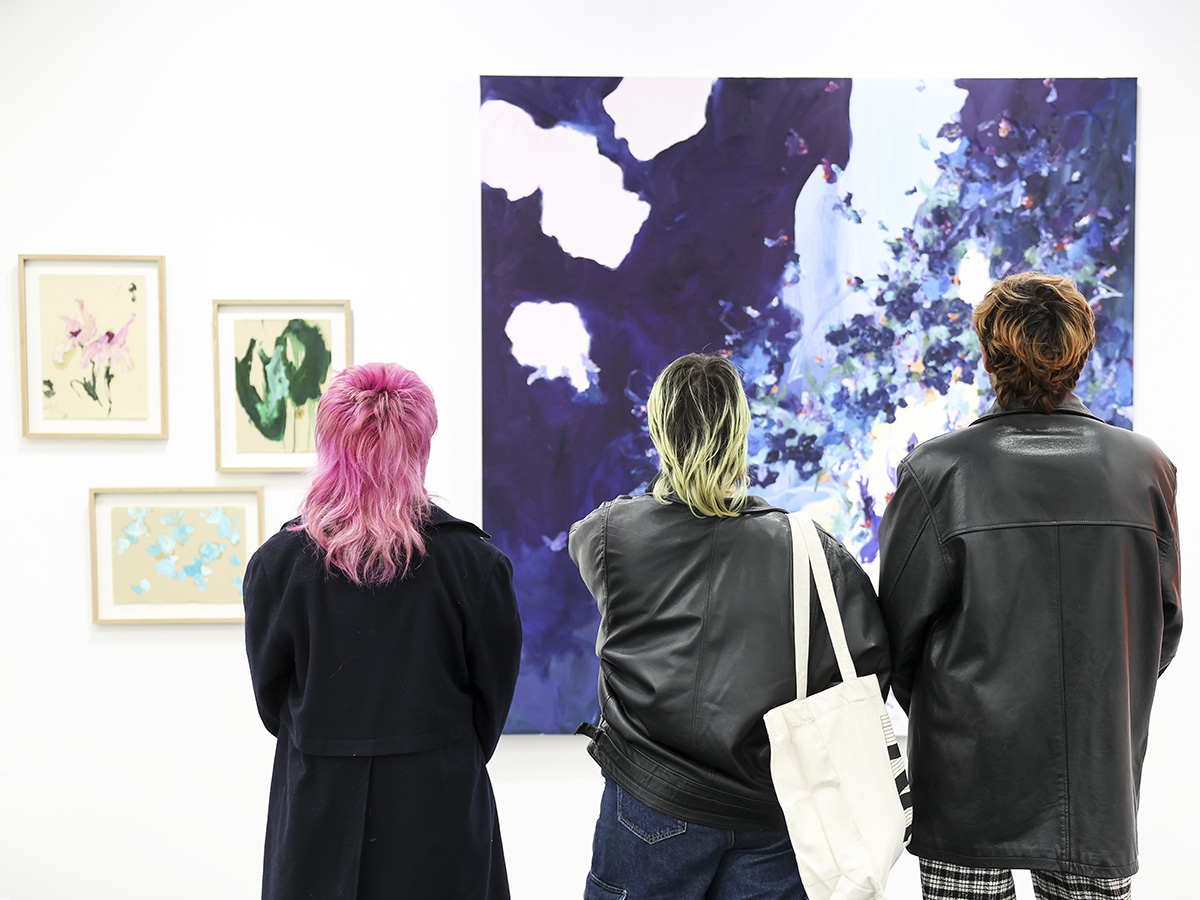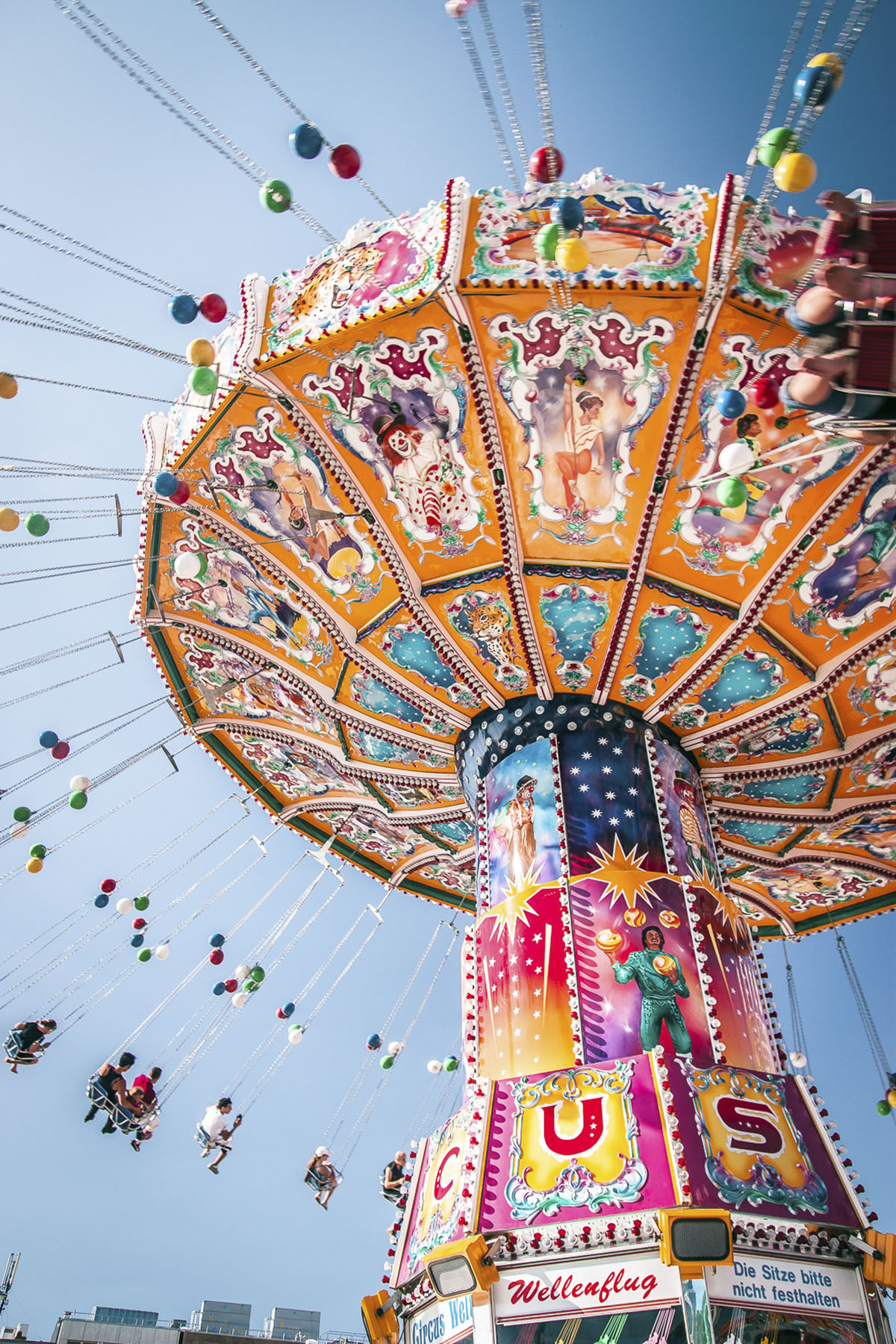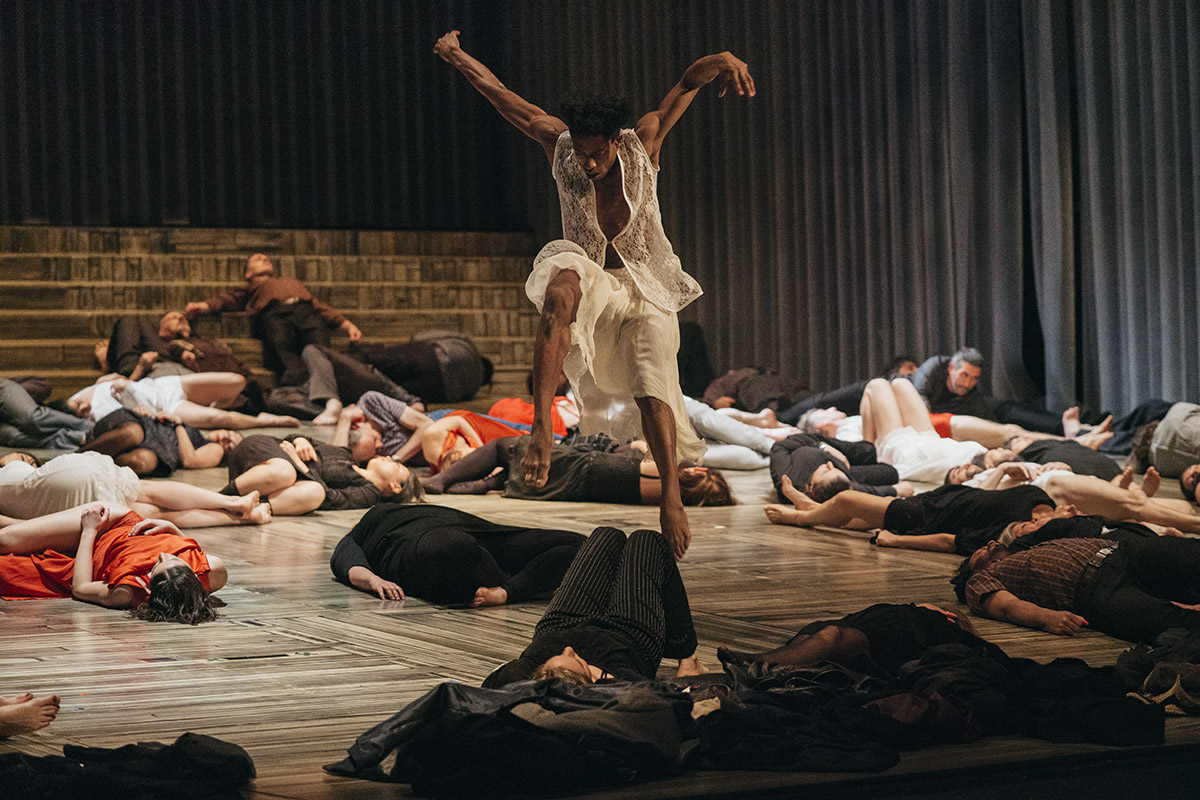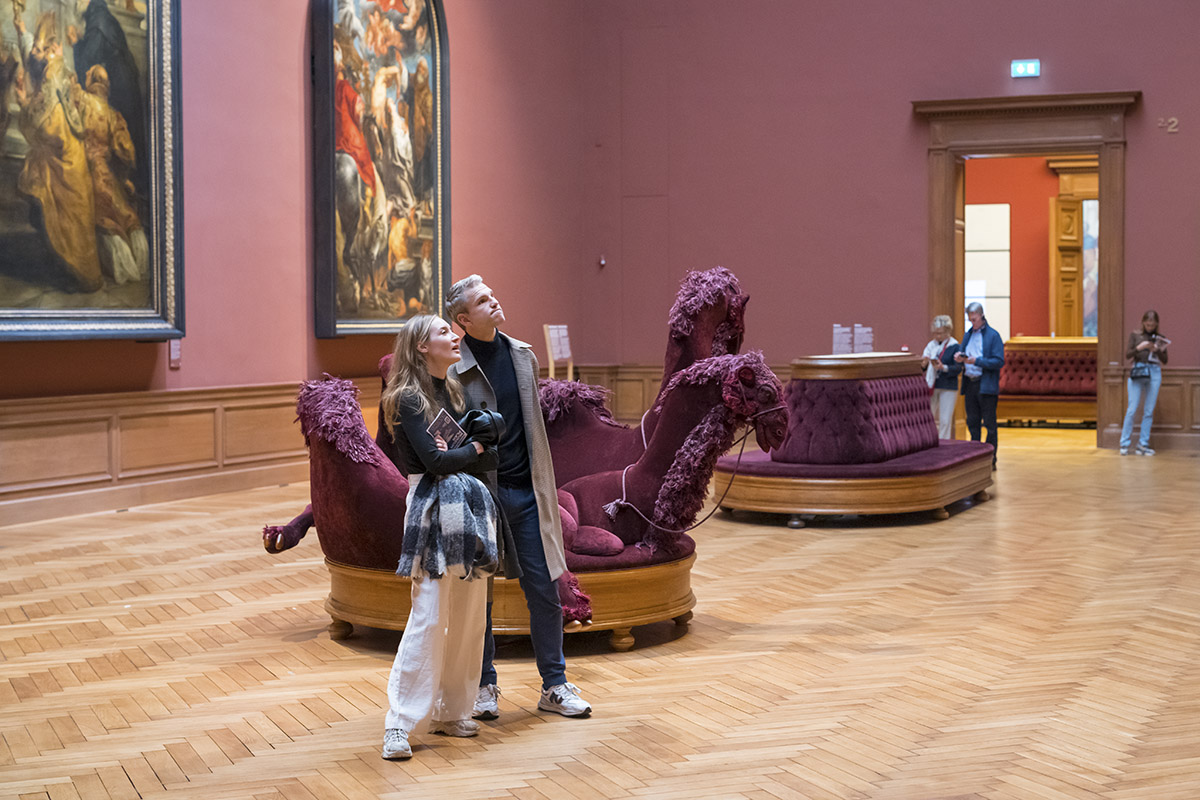The power of community
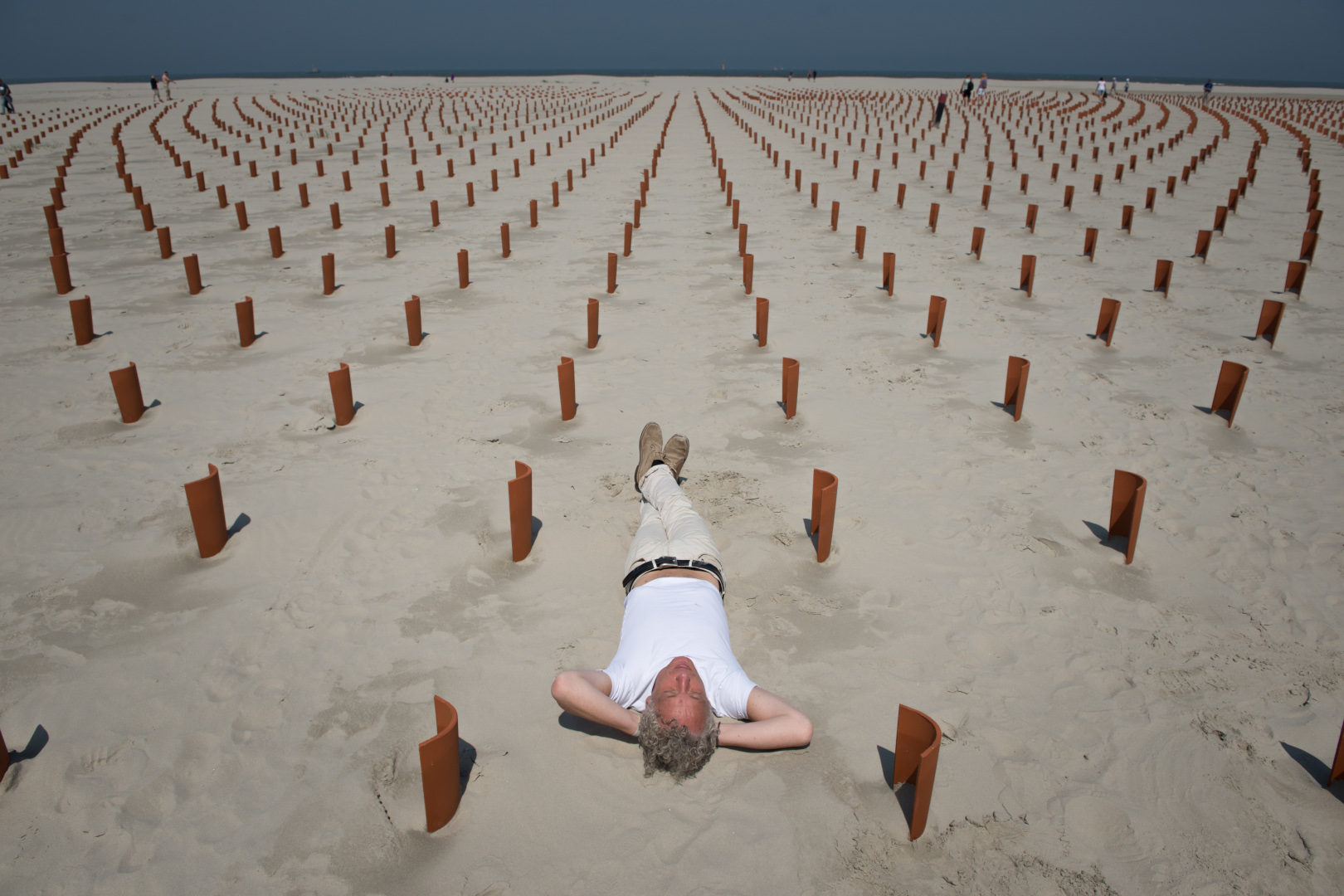
Declared a European Capital of Culture, Leeuwarden and the province of Friesland will celebrate with a substantial programme of events driven by the Frisian community and beyond. Discover Benelux explores what this exciting community has in store to inspire the curious tourist in 2018.
As the world faces challenges like that of the environment, we often look to major cities to pioneer and adapt to the inevitable change. Leeuwarden will boldly lead by example, showing not only the vital importance of community, but also how art and culture can be used to inspire changes in how we live now and in the future.
“Our programme is about the future. If you want to find a new future you have to do three things: you have to dare to dream, dare to act and dare to be different,” says Oeds Westerhof, legacy director of Leeuwarden-Friesland 2018. These three core mantras are what guide this year’s events, orchestrated not only by renowned international talents, but also by the Frisian community.
Dare to act
A phrase that will be heard often this year in Friesland is ‘iepen mienskip’, meaning ‘open community’, which encompasses the bottom-up initiative of the programme. Although part of the Netherlands, Friesland has a distinguishable culture. But this does not mean Frisians are a closed community. “What is very interesting about the Frisian culture is that we have our own identity, we have our own language that we speak,” says Jort Klarenbeek, international marketeer of Leeuwarden-Friesland 2018. “In 2018, we want to break that closed sense of community that people might think we are and transform it into an open sense of community.” This programme is built upon a seemingly endless supply of volunteers keen to share their culture and ideas with the world. That is why there is an ‘iepen mienskip’ programme for Leeuwarden-Friesland 2018 separate from the main one with hundreds of projects to explore.
Even small Frisian villages like Veenwoudsterwal, with only 128 houses, will not be excluded from the programme’s open community theme as filmmaker Sjoerd Litjens will premiere a series documenting each resident. Projects like Sense of Place are also made in consultation with the community, as artist Joop Mulder oversees the creation of spectacular land art along the Wadden coast. Visitors will be able to experience this project via a specially made bicycle route. Meanwhile, the often-unseen community of the Fier treatment centre for victims of violence in dependent relationships and Leeuwarden prison inmates will be opening the doors to their worlds.
Of course, the cultural programme must include Leeuwarden’s famed residents: artist M.C. Escher (1898-1972) and exotic dancer Mata Hari (1876-1917). Explored in two exhibitions at the Fries Museum, Mata Hari: The Myth and the Maiden follows her incredible life through 150 objects, many of which have never been exhibited, and Escher’s Journey displays around 80 of the artist’s works including his acclaimed Day and Night (1938). Another cultural heritage will be honoured in the town of Drachten, where the art movements De Stijl and Dada flourished, by Museum Dr8888.

Mata Hari: The Myth and the Maiden. Credit: © foto van Mata Hari, de mythe en het meisje, Leeuwarden-Friesland 2018.
The wider Netherlands will certainly not be excluded from the programme. The Migrating Ceramics exhibition at the Keramiekmuseum Princessehof displays one of the Netherlands’ greatest exports. 100 Years of De Ploeg at the Groninger Museum will show a retrospective of work from the Groningen visionaries who pioneered this art movement. Also, Dutch artists like Barend Koekkoek (1803-1862) and international masters like J.M.W. Turner (1775-1851) will be displayed at the Groninger Museum’s Romanticism in the North, their first international exhibition of northern European landscape paintings from the Romantic era.
A great deal of focus is placed on sustainability and how we should tackle the uncertain future of our environment. For example, Fossil-Free Friesland will demonstrate a future without dependency on fossil fuels with events such as a solar boat race or the Eleven Roads Tour, where sustainable vehicles like electric taxis and e-bikes will dominate the Frisian roads. The Places of Hope exhibition showcases pioneers working towards a more sustainable future that we do not have to dread, while WaterConnecting 2018 explores how Friesland utilises, tames and enjoys water as around a third of the country is below sea level.
The cultural history of Friesland is also explored this year. “As cities of culture, we have a responsibility towards legacy,” says Claudia Woolgar, creative producer of Leeuwarden-Friesland 2018. “The way in which this programme has been built and sustained throughout the community of Friesland means that legacy has been knitted into the very heart of the programme.” Under the Tower, for example, will bring to life 30 local stories around Frisian churches in collaboration with artists. Meanwhile, Burgwerd will pay homage to the blind Frisian poet Tsjêbbe Hettinga (1949-2013) by shrouding the village in darkness and encouraging participants to follow a route holding the shoulder of another. This human connection will also be a part of 8th Day, where a human ‘machine’ constructed with music, dance or theatre will encourage participants to communicate as each project must relate to one another to start a chain reaction.
Dare to be different
Society is becoming more diverse. That is why Leeuwarden-Friesland 2018 will underline the importance of celebrating diversity, using culture to ignite discussion and create a willingness to integrate. “We have projects that stress the differences between people, and we see that as a strength,” says Westerhof.
In July, the Welcome to the Village festival will function as a micro-society filled with musical, artistic and culinary delights where solutions are found to create a more sustainable and integrative future. This vision continues backstage where ten per cent of the volunteers are newcomers to Friesland, some of them refugees. In the village of Sint Annaparochie, a refugee centre has been part of The Journey community art project. Concern about the separation between the local and refugee residents prompted organisation Haring & Hummus to help them communicate and even undertake a theatrical walk in 2016 from the refugee centre to the centre of the village.
Using art as a catalyst for change is an important goal at Leeuwarden-Friesland 2018. “It’s about using art to change, using culture as a medium for change,” says Woolgar. “It’s the courage to do things differently.” For Strangers on Stage, performances are used to confront attitudes towards multiculturalism. Shows include the Israeli-Dutch choreographic duo IVGI&GREBEN and the energetic magic of Slava the Russian clown. Another powerful performance will be Lost in the Greenhouse, a theatrical and musical whodunnit set in a greenhouse that tells the story of its Polish and Frisian workers.
Many types of diversity will be celebrated. For example, King of the Meadows will raise awareness of the bio-diversity of the Dutch landscape and its disappearing meadow birds. Embodying this message will be musical, dance and theatre productions, including an orchestra of 2,000 wind instruments and multimedia experiences where you can see through the eyes of a black-tailed godwit. At Frisian Dance Days, dancers of all ages and physical limitations will display their talents in a series of shows in October. Even the diversity of languages is celebrated at Lân Fan Taal, a collection of festivals and exhibitions exploring not only speech, but everything from braille to body language.

Shinji Ohmaki (Japan) has designed a sculpture inspired by the Japanese flower arrangement known as Tachibana for the city of IJlst for the 11Fountains project. Credit: © Team Horsthuis_1, Leeuwarden-Friesland 2018.
Dare to dream
Although predominantly promoting Leeuwarden and Friesland, many events involve collaborations with the international community. “Our emphasis lies on inspiring the rest of Europe, but also to provide the rest of Europe with a warm welcome to our region,” says Klarenbeek. One spectacular contribution will be the giant puppets, operated by dozens of people, from the Royal de Luxe street theatre. You can walk alongside these marvels as they explore, eat and even breathe. “The impact of the 15-metre-high giant in the small streets of Leeuwarden will be extraordinary,” says Woolgar. Other spectacles include the Tall Ships Race, beginning in Sunderland and ending in Harlingen, and the first TAFISA European Sports For All Games event where around 20 countries will demonstrate their cultural sports including Friesland’s canal vaulting pastime ‘fierljeppen’.
The canal route connecting Friesland’s 11 cities, which was once the stage of an ice-skating race, has inspired the 11Fountains project, bringing together international artists to create permanent installations and a new cultural route. “Each of the fountains reflects the history of the cities,” says Woolgar. “Each of those artists, through their contact with the local community, has come up with a fountain design that says something about the city.” Other international artist exhibitions include LÛD International Sound-Art in Rijsterbos and the epic Colorfield Performance where 400 artists will create epic art together.
Leeuwarden-Friesland 2018 is not short on international musicians either. Britain’s The Subways will perform at the Welcome to the Village festival, while Europe’s youngest generation of musicians will perform over 1,000 concerts as part of At the Watergate. All tastes are accommodated, like Opera Spanga’s production of Verdi’s Aida, or the Oranjewoud Festival’s programme of classical music. Even international filmmakers will participate with Sailing on the Grass, where directors explore the Frisian landscape and how the locals live together.
At Potatoes Go Wild, you can also discover the 160-year-old agricultural partnership of cultivating potatoes between Friesland’s Het Bildt and Malta. Their charming exchange of poetry attached to potato bags will also be on display. Furthermore, awareness of a disappearing international community will be raised at Silence of the Bees, a project stressing an environmental issue affecting us all. As Westerhof explains: “The only way to find a future for our city, for our region, for our country and also for Europe is that people stand together and work bottom up for new solutions for the future.”

: Potatoes Go Wild. Credit: © Potatoes Go Wild, Leeuwarden-Friesland 2018.
It is not only the programme of Leeuwarden-Friesland 2018 that seems endless, but also the voices and passion of those who have brought it to life. “This is a different type of programme and the reason is because of the sense of community, it’s a bottom-up initiative,” says Woolgar. “It’s programmed literally by thousands of people throughout the province.” It is no doubt impossible to imagine that this province will not live up to its year-long title and provide the light needed to inspire the world.
This is merely a taste of what is to come at Leeuwarden-Friesland 2018. Discover more events at 2018.nl
TEXT: ISA HEMPHREY
Subscribe to Our Newsletter
Receive our monthly newsletter by email
